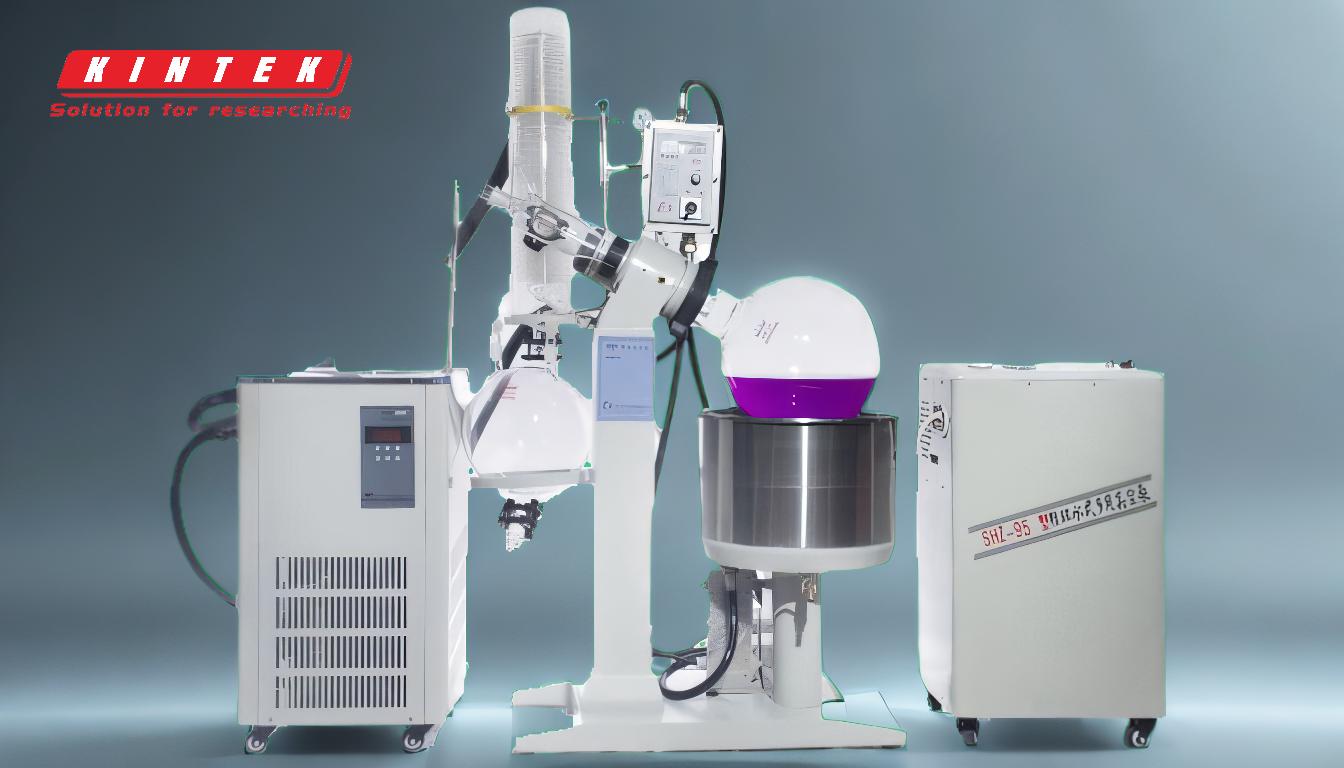The receiving flask in a rotary evaporator plays a critical role in the separation and purification process. It is designed to collect the condensed solvent that has been evaporated from the rotary flask and passed through the condenser. This flask ensures that the re-liquefied solvent, which may contain the substance being tested or purified, is safely stored for further analysis or use. Its placement beneath the condenser allows for efficient collection of the condensed liquid, ensuring the integrity of the sample and the efficiency of the evaporation process.
Key Points Explained:

-
Primary Function:
- The receiving flask is used to collect the re-liquefied solvent after it has passed through the condenser. This solvent may contain the substance being tested or purified, making the flask an essential component for sample recovery.
-
Location and Connection:
- The receiving flask is located beneath the condenser and is typically connected to it via a glass tube. This setup ensures a direct and efficient flow of the condensed liquid into the flask.
-
Material and Design:
- The flask is usually made of durable materials like Borosilicate Glass 3.3, which is resistant to thermal shock and chemical corrosion. This ensures the flask can withstand the conditions of the evaporation process and maintain the integrity of the collected sample.
-
Role in the Evaporation Process:
- The receiving flask accommodates the recovered gas from the condenser, which has been converted back into a liquid state. This step is crucial for the separation and purification of the desired substance from the solvent.
-
Storage and Further Use:
- After collection, the flask stores the purified or concentrated sample, which can then be used for further analysis, testing, or processing. This makes the receiving flask a key component in ensuring the success of the rotary evaporation process.
-
Efficiency and Safety:
- By efficiently collecting the condensed solvent, the receiving flask helps maintain the efficiency of the rotary evaporator. It also ensures the safety of the process by securely containing the re-liquefied solvent, preventing any potential spills or contamination.
In summary, the receiving flask is an indispensable part of the rotary evaporator, designed to collect and store the condensed solvent, thereby playing a vital role in the overall separation and purification process.
Summary Table:
| Key Aspect | Description |
|---|---|
| Primary Function | Collects re-liquefied solvent for sample recovery. |
| Location and Connection | Positioned beneath the condenser, connected via a glass tube. |
| Material and Design | Made of Borosilicate Glass 3.3 for thermal and chemical resistance. |
| Role in Evaporation | Stores recovered gas converted to liquid for separation and purification. |
| Storage and Further Use | Holds purified samples for analysis, testing, or processing. |
| Efficiency and Safety | Ensures efficient solvent collection and prevents spills or contamination. |
Need a reliable rotary evaporator setup? Contact our experts today to find the right solution for your lab!














